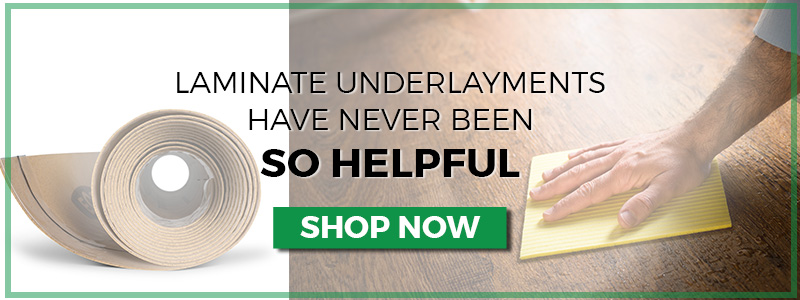Flooring installations can be an intensive yet rewarding process for many homeowners across the country. Each material choice comes with its own unique set of pros and cons, delivering a quality balance of price and performance for your property. Laminate flooring is one approach that provides stunning outcomes that imitate real wood without the cost or maintenance associated with hardwood floors. Taking the time to properly prepare for your installation process may help you avoid costly mistakes and setbacks. Not investing in a quality laminate underlayment, for example, can leave your new flooring vulnerable to a wide variety of issues. Eco Cork Foam (ECF) was designed as a polyethylene blend with granulated cork to be the absolute best underlayment for laminate flooring. We’re here to provide a durable product that serves to protect your floors through the life of their warranties and beyond.
While our laminate flooring underlayment has been rated among the best options in the industry per third-party lab results, it can only do so much to improve the outcome of your project. Today, we’ll discuss a few of the most common installation mistakes individuals have made with their new laminate flooring. If you require a quality floor underlayment for your new flooring, be sure to pick up a roll of Eco Cork Foam today!
Not Adjusting for Dilatations in Multiple Rooms
The gap you provide for your new laminate flooring is an essential measure to ensure that each plank has room to expand and contract as the humidity and temperature change. Laminate flooring is meant to serve as a “floating floor,” meaning that it is not secured to the subfloor in any way. This is done to allow for enough clearance for your floor system to move when contracting and expanding. As such, it’s important to allow a small amount of clearance around the perimeter of each room. Many homeowners make the mistake of giving the same clearance for rooms of different sizes, moving from their 10’ x 10’ bedroom to the 12’ x 20’ living room without a second thought of changing dilatation ranges. While a quarter-inch gap is ideal for smaller spaces, larger rooms and commercial areas will require more clearance to allow for further expansion. Otherwise, you may wake up to find your new laminate flooring buckling!
Securing Moldings through the Laminate Flooring
Nailing your wall base to the floor may help keep everything in place, but it will also block your blanks from floating freely during times of expansion. Remember that your floor will be in a constant state of change between humidity and temperature differences, requiring a free-floating space to move around in for the best results. When you nail your moldings to the floor through the laminate, your new planks will be fastened in one spot. When you consider this blockage of movement across the entire room, it should be easy to see why this practice can result in serious problems.
Tapping When it isn’t Necessary
Today’s laminate flooring options rely on a tongue and groove system to click together, negating the need to hammer your planks together. While using a tapping block was necessary back in the day, doing so on modern flooring materials now can actually do a lot more harm than good. Tapping your planks may damage their clicking system, hampering each plank’s ability to snap together, creating serious issues with your flooring’s stability.
Installing on Uneven Subfloors
The thin nature of laminate flooring makes it a must to install your product on a perfectly even subfloor. Failing to do so can result in numerous problems and a severely reduced life expectancy for your floors. Walking across a floor that is not level will result in flexing and bending as your laminate adjusts to the angles of the subfloor. When the planeness of your subfloor is bad enough, the laminate planks can struggle to stay together, creating gaps and possibly breaking the locking system. It is vital to take care of any imperfections before any flooring installation happens. One way to account for minor imperfections is to invest in a quality laminate underlayment such as Eco Cork Foam. Our top-rated product provides superior cushion and support to create a surface that is level, secure, and ready for use.
DIY flooring installations may sound simple in concept, yet the process involves a wide range of tasks that must all be done perfectly to avoid any future problems. Next time, we’ll continue this topic by discussing a few more common mistakes that are made when installing modern laminate. If you’re here looking for the best underlayment for laminate flooring, you’re in luck! Eco Cork Foam is designed to be the best choice for laminate and hardwood applications, providing superior support and protection to ensure quality outcomes for long-term enjoyment. Contact us today to learn more or pick up a roll at your local Home Depot to see the quality difference for yourself!



